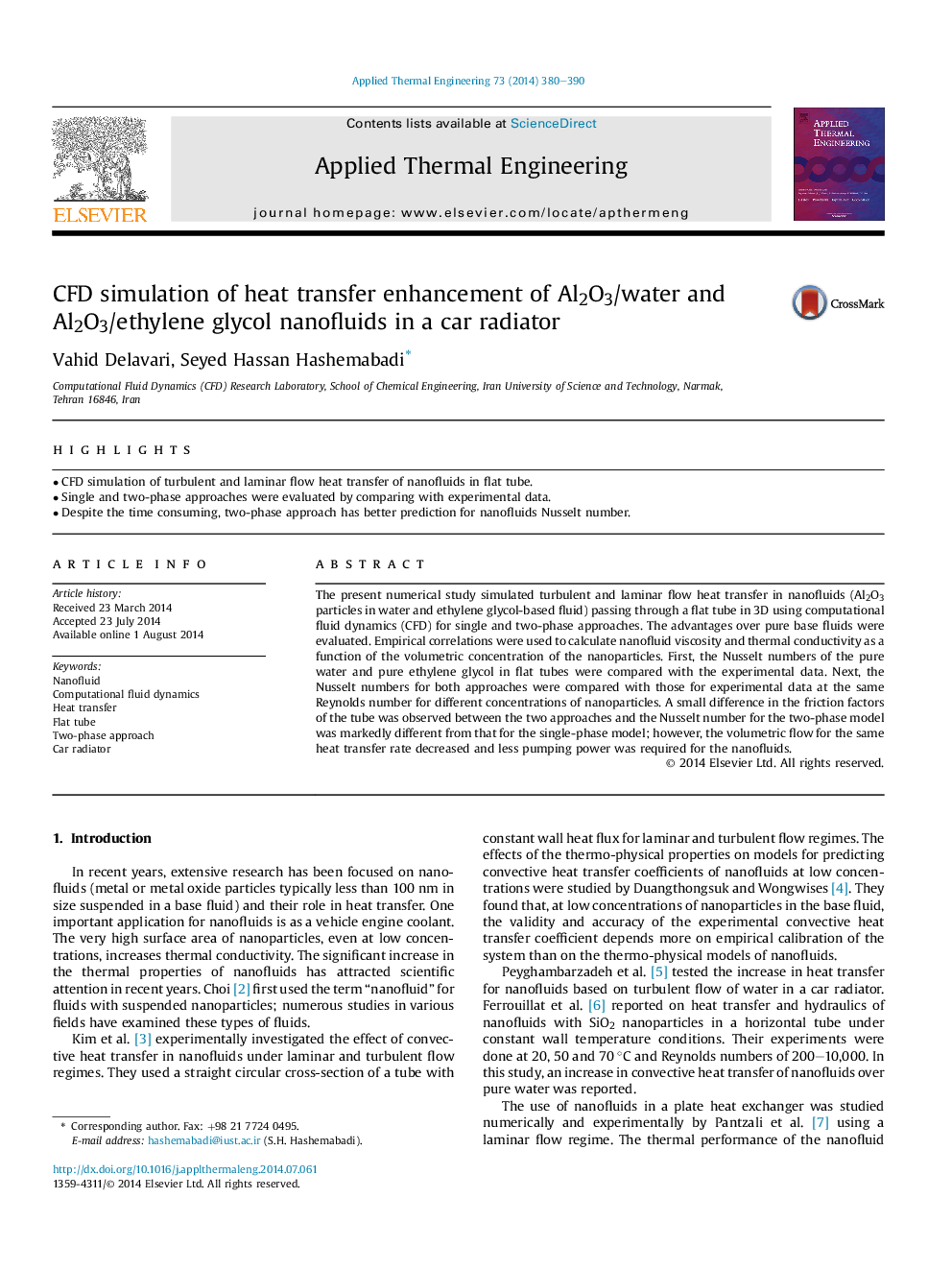| Article ID | Journal | Published Year | Pages | File Type |
|---|---|---|---|---|
| 645764 | Applied Thermal Engineering | 2014 | 11 Pages |
Abstract
The present numerical study simulated turbulent and laminar flow heat transfer in nanofluids (Al2O3 particles in water and ethylene glycol-based fluid) passing through a flat tube in 3D using computational fluid dynamics (CFD) for single and two-phase approaches. The advantages over pure base fluids were evaluated. Empirical correlations were used to calculate nanofluid viscosity and thermal conductivity as a function of the volumetric concentration of the nanoparticles. First, the Nusselt numbers of the pure water and pure ethylene glycol in flat tubes were compared with the experimental data. Next, the Nusselt numbers for both approaches were compared with those for experimental data at the same Reynolds number for different concentrations of nanoparticles. A small difference in the friction factors of the tube was observed between the two approaches and the Nusselt number for the two-phase model was markedly different from that for the single-phase model; however, the volumetric flow for the same heat transfer rate decreased and less pumping power was required for the nanofluids.
Related Topics
Physical Sciences and Engineering
Chemical Engineering
Fluid Flow and Transfer Processes
Authors
Vahid Delavari, Seyed Hassan Hashemabadi,
